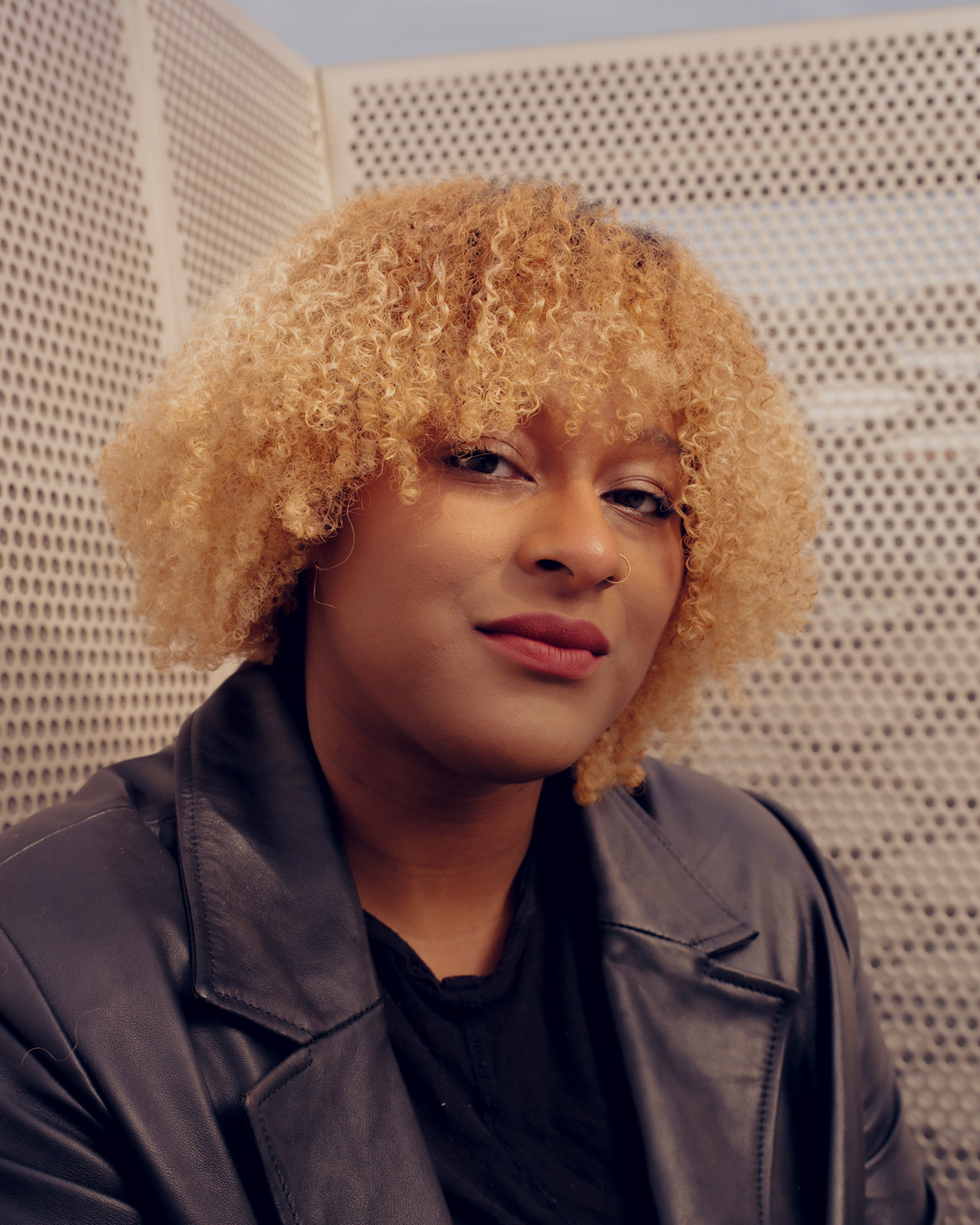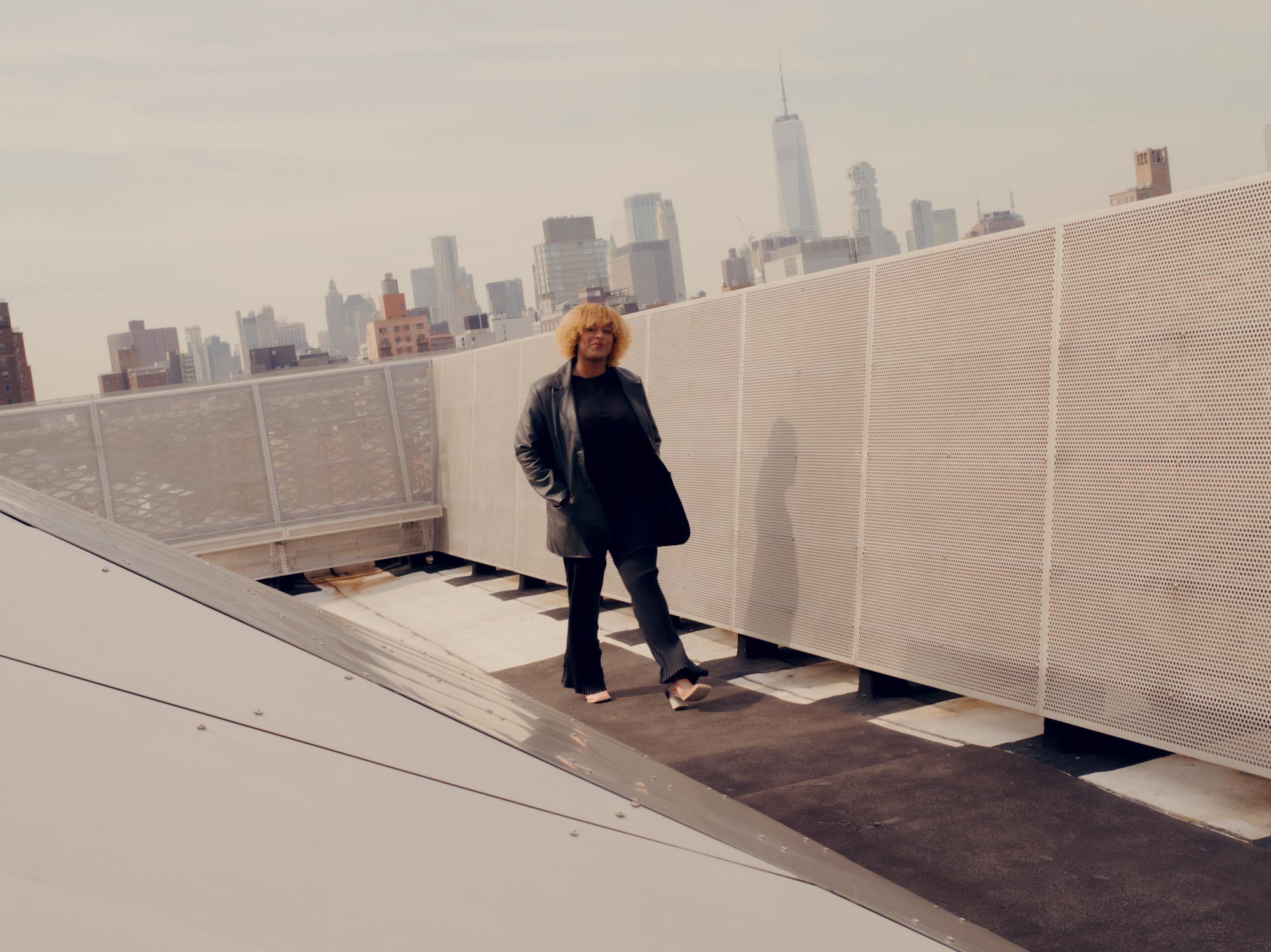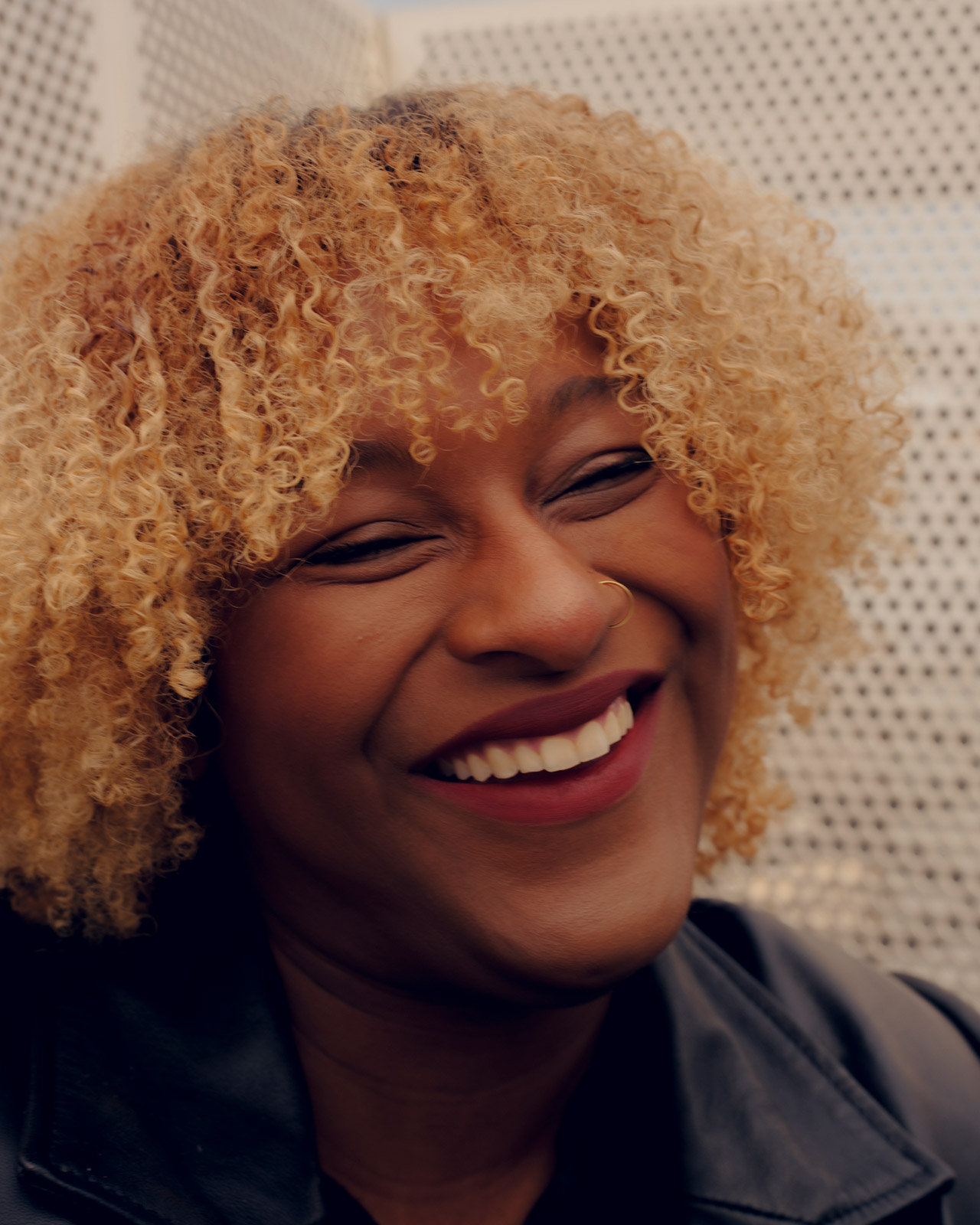
The newly appointed artistic director of Performance Space New York sits down with Document ahead of the East Village institution’s 44th annual gala
Performers are spread out on laptops in offices and balconies, or napping in green rooms, and event staff are blasting disco, carting materials for Performance Space New York’s gala dinner and performance—the 44th annual event by the East Village institution. When we at last settle into a comparably calm room amid folding tables and dishcrates, Taja Cheek tells me she “feels a bit like a baby,” having just been announced as the organization’s new artistic director this week. But she’s being overly modest: the Brooklyn-born curator, musician, and artist has already made a major impact. She’s worked with New York organizations including Creative Time, BRIC, and Highline Art, co-organized the legendary Sunday Sessions for MoMA PS1, and is also the guest curator for the 2024 Whitney Biennial’s performance program. As L’Rain, Cheek’s releases regularly top “best of” lists, and she’s toured with acts like Animal Collective and LCD Soundsystem, as well as collaborated with artists like Helado Negro and Kevin Beasley.
Before the festivities get underway, Document sits down with Cheek to discuss curating live performance, the role of institutions today, and the art of the soundcheck.
Drew Zeiba: Well, I mean, congrats.
Taja Cheek: Thank you.
Drew: You have a lot happening right now. You’ve just been announced as the artistic director of Performance Space, and you’re one of the curators of the performance and video program of the Whitney Biennial opening this week. But I know you are yourself an artist and musician. How does your background as a performer inflect your vantage as a curator or artistic director?
Taja: Firstly, I feel like good curators understand admin and they also understand production. It always is very glaringly obvious to me when someone hasn’t had experience in either. I think I knew I wanted to be a curator very early on in my life, and was basically told that it was too hard. And so I didn’t really pursue it. I did lots of other things, and got lots of other sorts of experience. And now I can kind of see how that all funnels in—like, I had worked in grant-giving organizations and ran DIY spaces, and worked as a musician. I worked in art consulting firms and lots of different nonprofits. That all funnels into the curatorial work now, because I have a better idea of the art world at large, and how everyone’s jobs come together to make work happen.
Drew: The range from DIY spaces to something like a four-decades-old arts organization to somewhere like the Whitney are also very different, and maybe even contradictory. How do you think of your role as an artist, a professional, and a curator in relation to “the institution”?
Taja: I see curatorial work first and foremost as a bridge and as a service job, ultimately. And that’s in service of artists, and also in service of a public—that’s where the ‘bridge’ part comes in. Just in conversations with friends who are artists, for example, I feel like I can sometimes help them understand why an institution they respond in the way that it has or what kind of concerns it might have from its perspective because that can be totally obtuse to an artist who doesn’t understand the very specific kind of logic that institutions have, which I now understand pretty well. And also there’s the converse: institutions oftentimes don’t understand where artists are coming from or what their concerns might be. Having experience in both worlds, I think, allows me to be a better liaison, which is really at the core of what a curator or artistic director does. I think many artists are in that same position because artists have jobs a lot of the time that are not being an artist. Inhabiting these dual roles can be made to seem like a weird, exotic thing. But I feel like there’s so many people around me that also get it. A lot of people at Performance Space, for example. There are so many artists that work here and have for a long time. They also have a dual consciousness in that way.
Drew: What are you excited for now as the artistic director of Performance Space?
Taja: I was saying earlier today that I feel a little bit like a baby that’s learning to talk and walk. It’s exciting to not know what I don’t know. I think a lot of times when people step into roles like these, the question is always What are you going to do? What are you thinking about? That’s fair. And people should be asking me that. But my style is very different, I think. I feel I just have a lot to learn. I feel like this is an organization that people care very deeply about, and not only that, but [one that people] have cared deeply about for many, many years. There are eras of communities that are intersecting and also running in parallel with each other. There’s a lot of history and context to grapple with—including recent history, or just understanding the current moment of our organization, how people function and do their jobs, and what’s important to them. I’m trying to take the ego out as much as I can before coming in with my ideas. Of course, I have ideas. At the end of the day, I’m a curator at heart, but I’m trying to put them aside until I have a better understanding of what’s actually going on.
Drew: We’ve talked about how your experience as an artist influences your work in institutions, but do you feel like the opposite is true? Do aspects of your administrative or curatorial practice bring something to your practice as an artist?
Taja: Totally. I think about this every time I do a sound check, honestly—because I have very strong opinions about how a sound check should be run. Or every time I step into a new organization as an artist, I’m also looking at it as a curator, and just wondering, like, How do your contracts function? How are you organized? What staff do you have? How do the production staff work together? What equipment do you have? There are so many aspects of it that interest me. It does sometimes feel like I’m literally switching hats. I’m not an artist and a curator at the same time. I’m kind of one or the other one or the other at any given moment.
Drew: Do you have a very specific, like, check check, you say into the mic?
Taja: I wish I did. I usually just say nonsense into the microphone.
Drew: You’re free-associating.
Taja: I am free-associating and usually my band is saying something so I’m kind of talking to them while I’m on the mic. I haven’t figured it out but I’ve always wanted to do a multi-part podcast about the art of the soundcheck, which sounds so nerdy—and it is.
Drew: Has your work in museums inflected your creative process at a more micro level?
Taja: I feel like it hasn’t as much as I would like it to. And I’m not entirely sure why. I’m trying to figure out how to let my curatorial practice influence my music more. For some reason that flow of influence has been one that I’ve been reticent about. But it’s something I think about all the time. You know, when I’m traveling and playing, I’m mostly playing in clubs. I feel like musicians especially get shortchanged with what they’re allowed to imagine on a typical tour circuit. You play in a club and someone’s just doing random Bar Mitzvah lights, and you can only have any influence on the sonic realm of the stage, but anything else is up for grabs. It’s gonna take a while for the music industry to catch up [to what artists and musicians are doing]. All of the work that I do really centers interdisciplinarity. And I’m always figuring out how to rub up against that. I need to work with another curator. I’m not the curator for that job.












